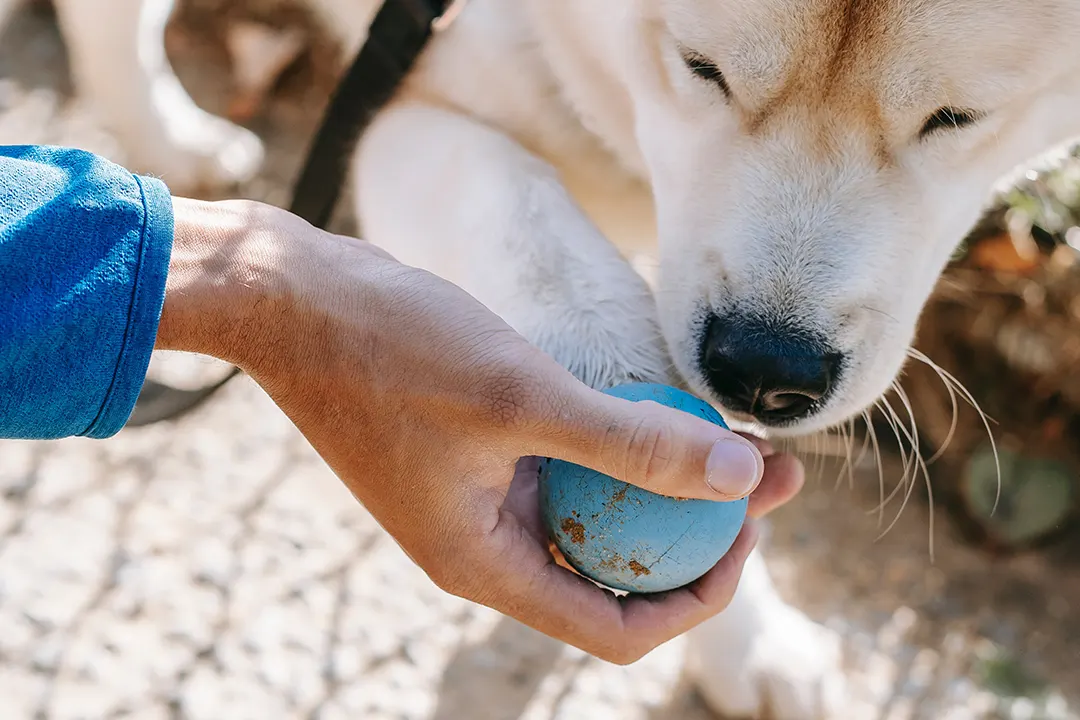Did you know that a well-trained dog can understand and respond to over 250 words and gestures? But here’s the thing – it’s not only about what they learn. It’s also how you, as a dog owner, support and manage their training. If you’ve ever felt like you’re speaking a different language to your furry friend, you’re not alone. Many dog owners find themselves questioning, ‘Why won’t my dog listen to me?’ or ‘Am I doing this right?’
You’re navigating a journey that every dog owner goes through. It’s normal to feel a mix of excitement and uncertainty as you work on obedience training. Remember, every ‘sit’, ‘stay’, and ‘heel’ is a step towards a deeper bond with your dog. The joy of seeing them respond to your commands isn’t just about obedience; it’s about building a language of love and respect between you and your pup.
In this guide, we’ll dive into the essential handling tips and command reminders that will transform your dog training experience. Get ready to turn those head-scratching moments into tail-wagging success!

Understanding Your Dog’s Communication
Think of your dog as a keen observer. They don’t just listen; they watch your every move. Dogs are incredibly in tune with our body language and tone. The key lies in balancing various forms of communication.
But what happens when words aren’t enough? That’s where leash tugs, e-collar corrections, and body movement cues come into play.
- Verbal Commands: Verbal commands are your direct line of communication. When you say “sit,” you’re not just issuing a command. Your tone, the way you stand, and even your mood play a part. Use a firm yet positive tone. Your dog can tell the difference between a frustrated ‘sit’ and an encouraging one. Dogs have been our companions for centuries, learning to read us just as much as we try to understand them.
- Leash Tugs: These are like subtle nudges in a conversation. Gentle tugs on the leash can guide your dog, saying, “Hey, this way.” It’s not about pulling or dragging – it’s a communication tool. Imagine guiding a friend through a crowded room; that’s how your leash tugs should feel to your dog.
- E-Collar Corrections: Now, this is a tool that needs finesse. The e-collar, often misunderstood, can actually be a game-changer in dog training when used correctly. It’s like tapping someone on the shoulder when they’re not paying attention. The e-collar is a reminder, not a punishment. Use it to gently steer your dog back to the task at hand.
- Body Movement Cues: Your stance, the direction you’re facing, even your walking pace send signals to your dog. If you’re relaxed, your dog senses that. If you’re tense, they pick up on that too.
- Blending Them Together: Your movements, voice, and tools like the leash or e-collar work in harmony to guide and teach your dog. It’s a symphony of communication where you’re both in sync.
The Art of Correcting Mistakes
Okay, so your dog’s not a robot, and that’s a good thing. Mistakes happen. It’s part of learning – for both of you. The trick is in how you handle these slip-ups.
- Timing is Everything: Ever tried to scold a kid for something they did yesterday? Doesn’t work, right? Same with dogs. Correct them the moment they make a mistake. If they’re chewing a shoe, a timely “no” helps them understand what they did wrong.
- Consistency is Key: Imagine if sometimes you let them chew the shoe and other times you don’t. Confusing, huh? Being consistent with your “no” ensures your dog knows what’s expected every time. This consistency builds trust and understanding.
- Using the E-Collar and Leash: It’s like a tap on the shoulder, remember? Not a slap. Use these tools to reinforce your verbal “no.” If your dog pulls on the leash, a gentle correction with the e-collar reminds them of the boundaries. It’s about reinforcement, not punishment.
- Non-Emotional Corrections: Dogs can sense frustration or anger. Keep your cool. Correct them like you’re pointing out a typo in a friend’s important email – helpful, not harsh.
- The Power of Praise: Here’s a secret – praise works wonders. When they get it right, celebrate. It makes a bigger impact than you think. Every “good dog” or treat when they obey reinforces the right behavior more than a dozen corrections.
Training your dog is like a dance. Sometimes you step on each other’s toes. But with patience, consistency, and understanding, you’re not just obedience training – you’re bonding. It’s about building a relationship where you understand each other, respect boundaries, and enjoy the journey together.

Perfecting the Heel Command
Heeling is not just a command; it’s a harmonious dance between you and your dog. Picture this: you’re walking through the park, and your dog is right by your side, matching your pace, not lagging behind or pulling ahead. That’s the art of perfecting the heel command.
- Loose Leash: The leash between you and your dog should be a gentle link, not a tightrope. It’s a signal, not a restraint. A loose leash tells your dog, “I trust you to stay by me,” encouraging them to walk calmly by your side.
- Positioning: Position is key in heeling. Your dog should be at your side, not ahead or behind. This position allows you to be in their line of sight, making communication clearer. It’s about walking together, each step in sync.
- Consistent Practice: Like any skill, heeling takes practice. Start in a quiet area with fewer distractions. Use treats and praise to encourage the correct position. Gradually, introduce more distractions as your dog becomes more comfortable with the command.
- Real-Life Example: Imagine you’re at a busy street corner. A loose leash and proper positioning allow you to guide your dog safely across, with both of you aware of each other’s movements. It’s about trust and understanding.
Employing the “Correct and Redirect” Strategy
Now, let’s talk about the ‘Correct and Redirect’ strategy. Have you ever found yourself telling your dog ‘no’ repeatedly, but it feels like talking to a brick wall? Here’s where the “Correct and Redirect” strategy comes into play. It’s about guiding, not just denying.
- Anticipation: Dogs often give subtle signals before a misbehavior. Maybe it’s a certain look in their eyes when they’re about to jump on the couch or a slight stiffness in their body before they bark. Learn to read these signs.
- Immediate Correction: When you see that misbehavior brewing, step in immediately. A firm “no” or a gentle tug on the leash can interrupt their thought process.
- Redirect with a Command: Here’s where you turn a potential mishap into a learning opportunity. Redirect your dog’s attention to a positive action. If they’re about to jump on someone, a quick “sit” command refocuses their energy.
Example in Action: Your dog is about to chase a squirrel. You notice, correct with a “no,” and immediately redirect with a “heel” command. It’s about redirecting their impulse into a positive action. Remember, dogs want to please; they just need clear, consistent guidance.
Managing Anticipation and Excitement in Dogs
Dogs, like humans, can get overexcited or antsy. Think of a child on Christmas morning. That’s your dog, pretty much all the time. But, you can manage this.
- Training for Calmness: Start your training sessions with calmness. A few minutes of quiet sitting or gentle petting can set a peaceful tone.
- Controlled Experiences: When introducing new experiences, keep control. If you’re about to play fetch, have your dog sit and wait calmly before you throw the ball. It teaches them to control their excitement.
- Consistent Routines: Dogs thrive on routine. Regular feeding, walking, and playtimes create a predictable environment. This predictability helps in reducing anxiety and preemptive behaviors.
- Practical Scenario: You’re at the vet’s office. It’s a place of many smells and sounds. Train your dog to sit quietly beside you, reassuring them with gentle strokes. It’s about creating a bubble of calm in a potentially stressful environment.
- Don’t Forget the Fun: Training your dog is not just about obedience; it’s about the joy of mutual understanding and the bond you strengthen every day. It’s about the little victories, the tail wags, and the loving looks. You’re not just training a dog; you’re creating a relationship.
Training a dog requires patience, understanding, and consistency. But the rewards? They’re immeasurable. You gain a buddy who understands you, a friend who listens, and a bond that’s unbreakable.

Integrating Training into Daily Routines
Integrating obedience training into your daily routine is like turning everyday life into a classroom. It’s convenient, practical, and reinforces your dog’s learning in a natural setting. Every moment can be a teaching moment.
- Making the Most of Routine Activities: Take feeding time, for instance. Before giving them their meal, ask your dog to sit or stay. It’s a simple way to practice obedience and patience. Or during walks, practice the ‘heel’ command. They’re learning, and they don’t even know it!
- Using Real-Life Scenarios: Waiting at a crosswalk? That’s a perfect opportunity to work on ‘sit’ and ‘stay’. Greeting a neighbor? A great time to reinforce ‘no jumping’. These real-life scenarios are invaluable. They teach your dog appropriate behavior in the contexts where it matters most.
- Keeping it Fun and Varied: Remember, training should be fun, not a chore. Mix it up. Practice different commands in different places. This keeps your dog engaged and prevents training from becoming monotonous.
Concluding Training Sessions on a Positive Note
Ending on a positive note is crucial. It leaves your dog feeling good about training, making them eager for the next session. It’s like ending a workout with a cool down and a high five – it just feels right.
- Celebrating the Small Wins: Did your dog finally sit when asked? Celebrate it. Use treats, toys, affection – whatever gets that tail wagging. These celebrations make your dog associate training with happiness and success.
- The Last Command Should Be an Easy One: Always end with a command you know your dog can ace. This boosts their confidence and ensures the session ends positively. It’s like leaving the basketball court after making that final shot.
- Cool Down Time: After training, spend a few minutes just relaxing with your dog. A gentle walk or some cuddle time helps them wind down and reinforces the bond between you two.
You’ve just armed yourself with essential handling tips and command reminders to elevate your dog training journey. Now, imagine taking that knowledge to the next level with the expertise of Stellar Canine’s Dog Training. With Stellar Canine, you’re not just learning; you’re experiencing the art of effective communication with your dog.
Here’s a fact – the best time to act on your dog’s training is now. Dogs thrive on consistency and timely learning, and the sooner you involve the expertise of Stellar Canine, the quicker you’ll see remarkable changes in your dog’s behavior and your own training skills.
Don’t let another day go by wishing for a better trained dog. Take action now! Click here to connect with Stellar Canine.

0 Comments